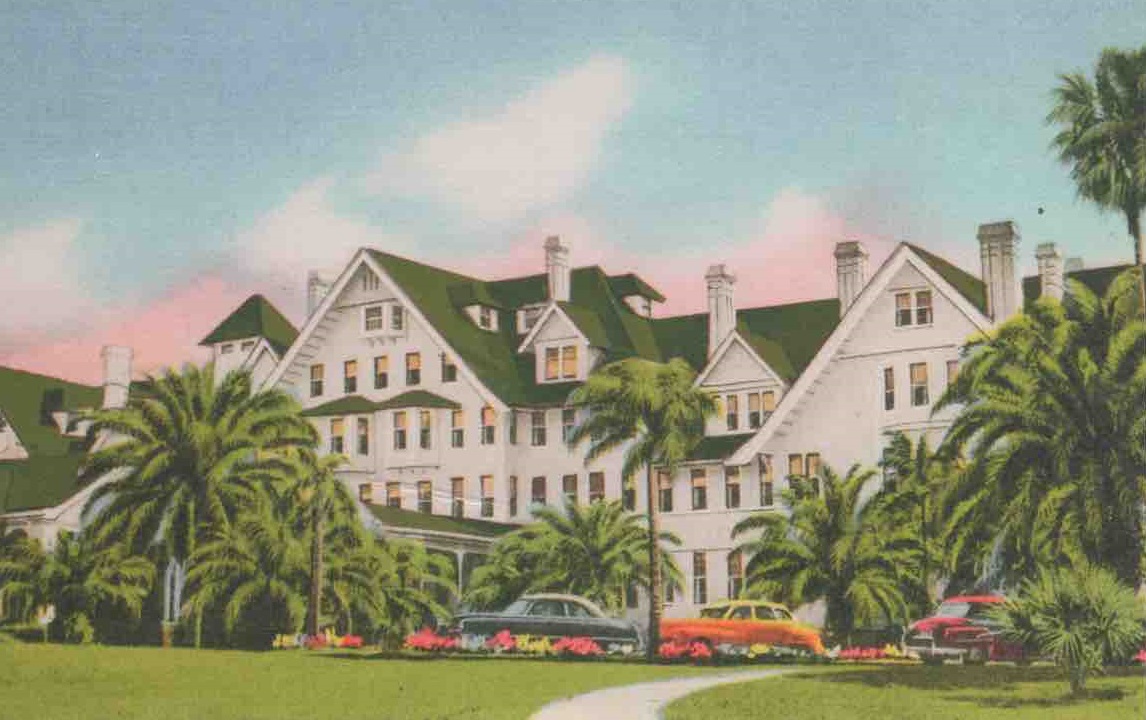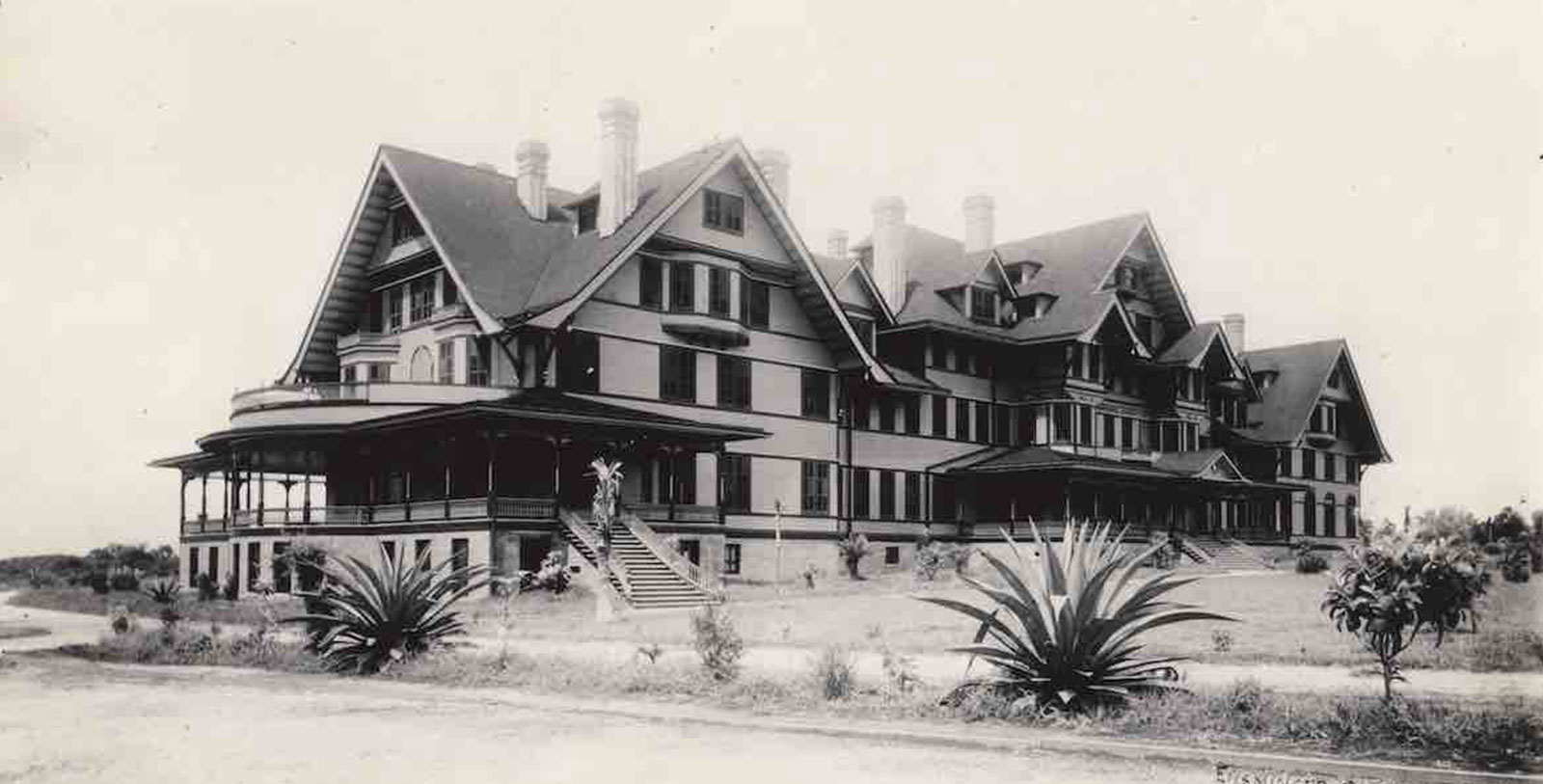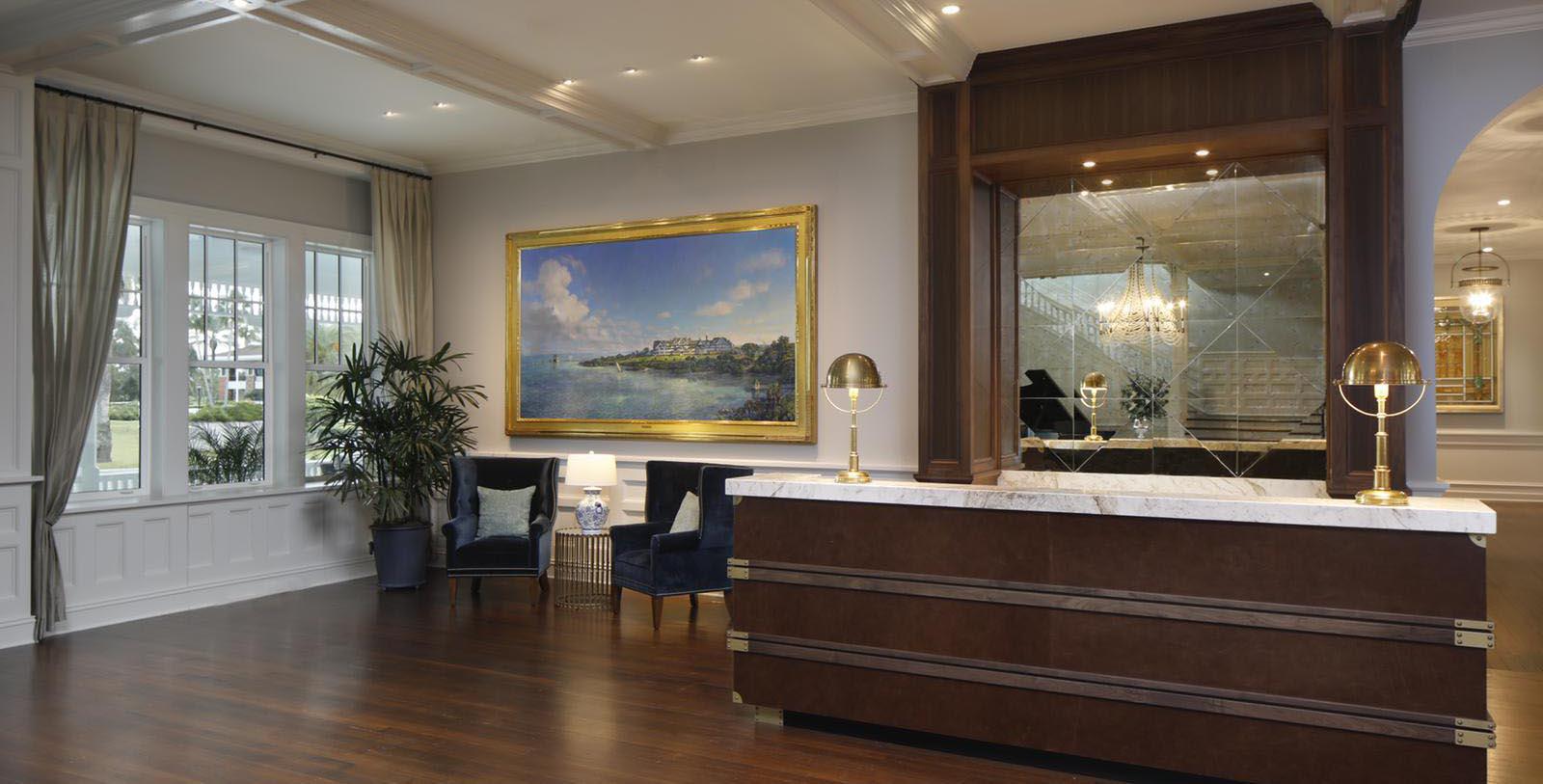Receive for Free - Discover & Explore eNewsletter monthly with advance notice of special offers, packages, and insider savings from 10% - 30% off Best Available Rates at selected hotels.
history
Discover Belleview Inn, which was a luxury retreat for the DuPonts and the Vanderbilts, as well as Babe Ruth, Bobby Jones, and Joe DiMaggio.

Belleview Inn Moved Onto New Foundation
Discover the amazing rebirth of this historic landmark, as well as its rich institutional history.
WATCH NOWA member of Historic Hotels of America since 2018, the Belleview Inn is a cherished cultural landmark in Belleair, Florida. The hotel’s fascinating story begins with Henry B. Plant, a railroad and steamship entrepreneur who dominated both industries during the Gilded Age. While Plant was associated with many thriving economic endeavors during his life, history best remembers him as the father to much of Florida’s railway network. In the late 19th century, Plant had begun to expand his railway system through the largely undeveloped wilderness of western Florida. His hope was that a new interlocking grid of railroads would further incentivize passenger travel into the state, thus making it a popular vacation destination. Among the routes that Plant developed was the Orange Belt Railway, the nucleus of which he had purchased in 1895. Plant soon realized that his prospective passengers would need somewhere to stay, as the region lacked any decent accommodation. Indeed, Tampa—the city that he chosen as a hub for his railways in western Florida—was just a small town of a few thousand people at the time. To resolve the situation, Plant built a grand, Queen Anne-style hotel out on the Pillenas peninsula. Measuring a total of 400,000 sq. ft., the building was the largest wooden structure in the entire state of Florida! It was largely constructed of heart pine imported directly from Plant’s Georgia estate overlooking Clearwater Bay. The hotel was also incredibly resplendent, featuring peaked gables, overhanging roofs, and wide verandas. And Plant had provided the latest amenities, too, including steam-generated electricity, a lobby-based telegraph, and even a resident orchestra. Debuting as the “Hotel Belleview” in 1897, it immediately became the most luxurious destination in the area. And as the years went on, the hotel became even grander. Henry Plant’s son, Morton F. Plant—who took over operations after the death of his father in 1899—painted it white and changed the roof titles to green. As such, the locals referred to the hotel as the “White Queen on the Gulf.” He also added an Olympic-sized swimming pool adorned in Italian tile, as well as additional wings in 1905 and 1914, respectively. Plant even hired the legendary Donald Ross to design two 18-hole golf courses. Both of those fantastic facilities are still in use today!
Despite Morton F. Plant’s death in 1919, the location continued to thrive. Nevertheless, Morton’s descendants sold the location to John McEntee Bowman of the Bowman-Bitman Corporation hotel chain. Bowman subsequently renamed the building as the “Belleview-Bitman Hotel,” and made it one of the collection’s flagship destinations. Bowman kept enhancing the hotel, adding on a final wing of accommodations in 1925. The hotel remained an admired attraction under Bowman’s watch, often entertaining the likes of the Studebakers, the Fords, the DuPonts, and the Vanderbilts. Other celebrities visited, too, including Babe Ruth, Walter Hagen, and Thomas Edison. But when the Great Depression struck, Bowman’s company faltered, and he was forced to sell the business. The hotel was then requisitioned by the US Army Air Corps in World War II to house troops stationed at the nearby MacDill Air Force Base. Over the next few years, the hotel’s owners conducted a number of updates in order to maintain its appeal among contemporary travelers. New guestrooms and extra levels appeared, which caused its original size to balloon to a massive 820,000 sq. ft.! Notable guests still visited as well, including U.S. Presidents Gerald Ford and Jimmy Carter. But the hotel underwent a slow decline starting around the 1980s, with the roof suffering in particular. After celebrating its 100th anniversary in 1997, the hotel unfortunately went through a series of unsuccessful ownership changes that culminated with its closure a decade later. Real estate developers even tried to demolish the historic building on several occasions! Fortunately, Mike Cheezum of JMC Communities attempted to save the location in 2016, submitting a strategy that would ensure its survival for years to come. JMC Communities ultimately restored the original part of the building, relaunching it as the “Belleview Inn” some two years later. Amazingly, the corporation managed to transport the entire structure to its present location and preserved nearly all of its original architectural features. Thanks to the actions of Mike Cheezum, JMC Communities, and the community of Belleair, this fantastic historic hotel is yet again one of Florida’s most esteemed getaways.
-
About the Location +
Belleview Inn resides in the town of Belleair, itself being just a few miles down the road from the vibrant destination of Clearwater, Florida. Located specifically in the Pillenas peninsula, the two settlements are among Florida’s most esteemed holiday destinations. But while both Belleair and Clearwater are currently famous for their identities as resort communities, their histories harken much farther back in time. Native Americans of the Tocobaga people once inhabited the region for millennia, purportedly using the clear mineral springs that spawned from the banks of what is now known as “Clearwater Bay.” (Clearwater Bay is the inlet between the main coastline and the thin strip of islands that proliferate further out into the Gulf of Mexico.) Yet, the first Europeans to arrive in the region were the Spanish, led by explorer Panfilo de Narvaez. While historians today speculate as to the exact location of Narvaez’s landing in 1528, most believe it was in the general vicinity of Clearwater and Belleair. He was then followed by the far-more famous Hernando de Soto a decade later, who first set foot on the other side of the peninsula in Tampa Bay. Passing by the region, Hernando de Soto eventually travelled through much of the American Southeast, before dying along the banks of the Mississippi River in 1542. Shortly after the founding of St. Augustine to the north in the 1560s, Pedro Menéndez de Avilés—the town’s administrator—sent a group of ten missionaries west to Pillenas peninsula to create several missions. Those structures proved to be short-lived, as the Tocobaga and their allies destroyed them quickly. Human settlement throughout the area remained sparse by the early 19th century, save for a handful of isolated towns of Native Americans. But that all changed in 1822, when Florida formally became a part of the United States. Americans slowly moved to the area at first, until the Federal Armed Occupation Act of 1842 offered 140 acres to anyone interested. A population boom soon followed, with some of the region’s most prominent families constructing homesteads across the Pillenas peninsula.
During the American Civil war, Clearwater Bay became a haven for rebel smugglers who frequently challenged the Union naval blockade out in the Gulf. In turn, gunboats affiliated with the U.S. Navy typically raided the coastline and even confiscated all kinds of supplies. But the Pillenas peninsula remained free from large-scale fighting, only enduring economic hardships. When the war finally ended in the spring of 1865, Northerners moved to the peninsula and invested heavily into its economic development. Most hoped that a network railroad would incentivize travel into the state, transforming it into a popular vacation destination for those seeking a respite from the harsh winters of America’s Northeast and Midwest. The first railroad to arrive in the Pillenas peninsula was the Orange Belt Railway, which Peter Demens—the founder of nearby St. Petersburg—created in 1888. The population swelled and several new towns quickly formed, including the likes of Clearwater some three years later. Railroad magnate Henry B. Plant took a particular interest in the area, buying the Orange Belt Railway in 1895. Recognizing the potential of the peninsula to become a luxurious retreat, he soon commissioned the development of a gorgeous boutique hotel along the railroad to further encourage its use. Completed some two years later as the “Belleview Hotel,” it rapidly became one of the most visited locations in the greater Tampa area. The town of Belleair itself manifested around Plant’s railroad, as people gathered to either work in the nascent hospitality industry or to build their own lavish seasonal homes. Nearly all the Pillenas peninsula became a preeminent getaway by the dawn of the 20th century, with several thousand people visiting each year. Today, the region remains an amazing tourist hotspot, as many of its beaches continue to attract guests. In fact, Clearwater Beach has frequently been ranked as among the country’s best destinations year after year!
-
About the Architecture +
While the architectural style of the Belleview Inn is difficult to define, experts have nonetheless identified elements of Shingle-style architecture within its overall design. Popular throughout New England at the height of the Gilded Age, Shingle architecture was born out of an immense regional interest to preserve colonial American culture. This desire specifically manifested in the aftermath of the Centennial Exposition if 1876, in which several of its exhibits celebrated the history of the nation’s origin story. Those throughout New England felt that the style of Shingle architecture best represented the simplistic aesthetics of British American architecture that was perceived as a humble alternative to the popular Eastlake and Queen Anne architectural forms that predominated across the rest of the country at the time. In stark contrast to those aforementioned styles, Shingle architecture specifically eschewed ostentatious decorations for complex shapes constructed with modest materials. Cedar shingling became the most prominent kind, giving rise to the practice of referring to the form as “Shingle” architecture. The shingling was applied across the entire structure from the roof to the walls. Architects typically stained or painted the material, even allowing it to weather natural in some cases. What few decorative elements that did appear throughout the structure tended to emphasize asymmetrical layout of each Shingle-style building, as a means of making it appear more rustic and authentic. Great Palladian windows often appeared throughout the façade, while grand stone porches with beautiful columns occasionally served as the primary entrance point. On several occasions, architects would also include gables onto the roofs of some houses, as well as some small towers that blended in seamlessly with the overall design.
But other architectural aesthetics appear throughout the Belleview Inn, the most notable of which includes a style known as “Queen Anne.” Considered a successor to Eastlake architecture, Queen Anne became a widely popular architectural style at the height of the Gilded Age. Named in honor of the 18th-century British monarch, Queen Anne, the architectural form started in England before migrating to the United States. Yet, its name is misleading, as it actually borrowed its design principles from buildings constructed during the Renaissance. While the appearance of Queen Anne-style buildings may differ considerably, they are all united by several common features. For instance, they are typically asymmetrical in nature, and are built with some combination of stone, brick, and wood. Those buildings also feature a large wrap-around porch, as well as a couple polygonal towers. Those towers may also be accompanied by turrets along the corners of a building’s exterior façade. And like Shingle-style architecture, structures designed with Queen Anne-style design principles may also have pitched, gabled roofs that feature irregular shapes and patterns. Intricate wood carvings are a common sight throughout their layout, too, and are often designed in such a way to resemble different objects. As such, guests viewing the architectural features of Queen Anne architecture many feel as if they had been staring at an illusion! Clapboard paneling and half-timbering are a few other forms of woodworking that are regularly found somewhere within a Queen Anne-style structure. Nonetheless, the innate aspects of the hotel’s brilliant Queen Anne architecture blends seamlessly with its Shingle-style aesthetics, giving it a rare, beautiful appearance.
-
Famous Historic Guests +
Babe Ruth, legendary outfielder for the New York Yankees regarded today as the best baseball player ever.
Bob Dylan, musician known for such singles like “Blowin’ in the Wind” and “The Times They Are a-Changin’.”
Bobby Jones, winner of 13 golf championships that include the U.S. Open and the British Open.
Henry Ford, founder of the Ford Motor Company and creator of the historic Model T.
Joe DiMaggio, outfielder for the New York Yankees best remembered as the “Yankee Clipper.”
Thomas Edison, inventor known for such inventions as the motion picture camera and the lightbulb.
Tony Bennett, musician known for such hits as “Because of You,” “Rags to Riches,” and “I Left My Heart in San Francisco.”
Walter Hagen, winner of 11 major golf championships that include the PGA Championship and the U.S. Open.
Margaret Thatcher, Prime Minister of the United Kingdom (1979 – 1990)
King Edward VIII of the United Kingdom (1936; abdicated and became the Duke of Windsor)
Gerald Ford, 38th President of the United States (1974 – 1977)
Jimmy Carter, 39th President of the United States (1977 – 1981)
George H.W. Bush, 41st President of the United States (1989 – 1993)































